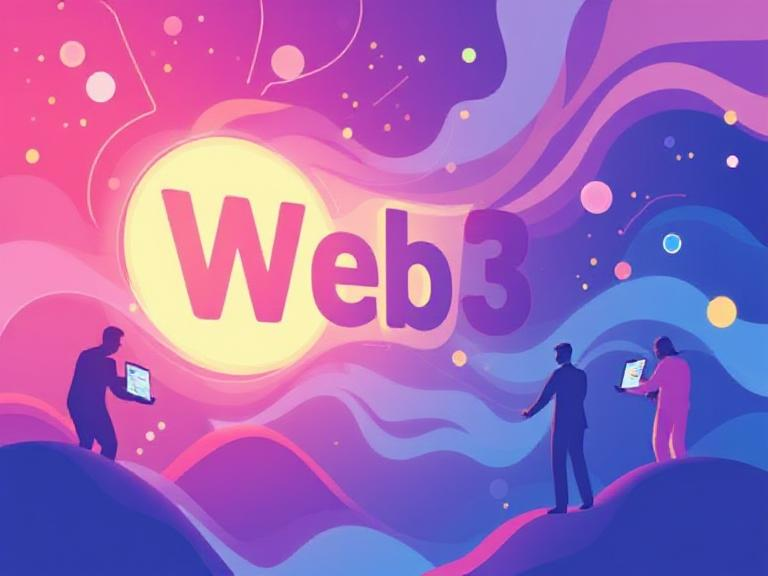The buzz around Web3 has been growing for years, but as the space becomes more crowded, it’s easy to get lost in the noise. From blockchain to NFTs and decentralized applications (dApps), the Web3 landscape is full of potential — but it’s also overflowing with hype. Many brands are jumping on the Web3 bandwagon, but how can they differentiate themselves and actually drive sales using these technologies?
The key is to look beyond the buzzwords and focus on the real value Web3 can bring to your marketing strategy. Web3 isn’t just about the next trend — it’s about creating a more transparent, community-driven, and decentralized ecosystem that empowers both brands and consumers. By understanding how to effectively leverage these tools, you can create a marketing strategy that resonates with your audience and drives real business results.
In this article, we’ll explore how Web3 marketing can be a powerful tool for driving sales, cutting through the hype, and building long-term customer loyalty.
What is Web3 Marketing?
Before we dive into how to use Web3 effectively in your marketing strategy, let’s first define what Web3 marketing is. At its core, Web3 refers to the third iteration of the internet, one that is decentralized, blockchain-based, and focused on providing users with greater control over their data and digital identities.
In the Web3 ecosystem, businesses and consumers interact through decentralized platforms, where ownership and transactions are transparent, secure, and controlled by the users rather than central authorities. This opens up new opportunities for brands to create more engaging and authentic marketing experiences.
Web3 marketing leverages technologies like blockchain, NFTs (non-fungible tokens), smart contracts, and decentralized finance (DeFi) to create value for both brands and consumers. It’s about building deeper relationships with customers, offering unique digital experiences, and facilitating more direct and transparent interactions.
Cutting Through the Hype: How to Use Web3 for Real Results
While the promise of Web3 is huge, it’s important to focus on strategies that actually deliver tangible results. Here are some practical ways to leverage Web3 marketing to drive sales and growth:
1. Focus on Community Building and Engagement
One of the core principles of Web3 is the emphasis on community. Decentralized platforms allow users to participate in governance and have a voice in how platforms evolve. This creates a strong sense of ownership and belonging for users.
For brands, this presents a unique opportunity to create highly engaged, loyal communities. By building a community around your brand through decentralized platforms, you can foster meaningful relationships with your customers and create advocates who will promote your brand.
In Web3 marketing, it’s not about simply pushing ads to consumers; it’s about building a tribe of people who genuinely care about what you do. Encourage conversations, listen to feedback, and involve your customers in decision-making through token-based incentives, voting, or exclusive access to content and products.
2. Leverage NFTs for Unique, Limited-Edition Offerings
Non-fungible tokens (NFTs) are one of the most talked-about aspects of Web3 marketing. NFTs allow brands to offer unique, digital assets that are verifiably scarce and tied to ownership. This can be incredibly powerful when used for limited-edition products, special promotions, or loyalty rewards.
Instead of relying on traditional digital coupons or discounts, NFTs allow you to create verifiable and exclusive offers that customers can buy, trade, or resell. This creates a sense of urgency and scarcity, driving demand and increasing the perceived value of your offerings.
For example, if you’re a fashion brand, you could release limited-edition digital clothing or accessories as NFTs, giving customers the ability to showcase their purchase on their social media profiles or virtual avatars. This adds a layer of exclusivity and gamification to your marketing strategy.
3. Implement Blockchain for Transparency and Trust
Blockchain technology, the foundation of Web3, is known for its transparency and immutability. This feature is incredibly valuable when it comes to building trust with your customers. By integrating blockchain into your marketing strategy, you can provide customers with verifiable proof of your brand’s claims — whether that’s sustainability, authenticity, or ethical sourcing.
For example, a luxury goods brand could use blockchain to track the origin and authenticity of their products, offering customers a transparent view of the supply chain. This builds consumer confidence and makes your brand stand out in a crowded marketplace.
4. Reward Loyalty with Tokens and Decentralized Incentives
In Web3, the traditional model of loyalty programs can be transformed through token-based rewards. Rather than offering discounts or points, you can reward customers with tokens that have real utility. These tokens could be used for exclusive access to products, services, or experiences, or even traded within a larger decentralized ecosystem.
Decentralized finance (DeFi) protocols also open up the possibility for earning interest on these tokens or staking them to unlock additional benefits. By integrating these Web3 elements into your marketing strategy, you can create a more engaging and rewarding experience for your customers, encouraging them to return and continue interacting with your brand.
5. Create Decentralized Content Platforms
Content is still king, but in the world of Web3, the way content is created and consumed is changing. Decentralized content platforms allow creators and brands to interact with their audience without the middlemen of traditional social media channels.
Instead of relying on platforms like Instagram or YouTube, brands can build their own decentralized content hubs or partner with existing decentralized platforms to distribute their content. This gives brands more control over how their content is shared and how they engage with their community.
Through decentralized content platforms, users can also be rewarded for engaging with content, such as earning tokens for watching videos, sharing posts, or contributing to discussions. This incentivizes participation and helps brands grow their communities organically.
Web3 Marketing: The Future of Sales?
While Web3 marketing is still in its early stages, it has the potential to revolutionize how businesses interact with consumers. By focusing on community-building, leveraging NFTs for exclusivity, using blockchain for transparency, and offering token-based rewards, brands can move beyond the hype and deliver real value to their customers.
It’s important to remember that Web3 is not a one-size-fits-all solution. The key is to find the right combination of Web3 tools and strategies that align with your brand’s goals and resonate with your target audience.
To dive deeper into Web3 marketing and how it can help you drive real sales, read more.



